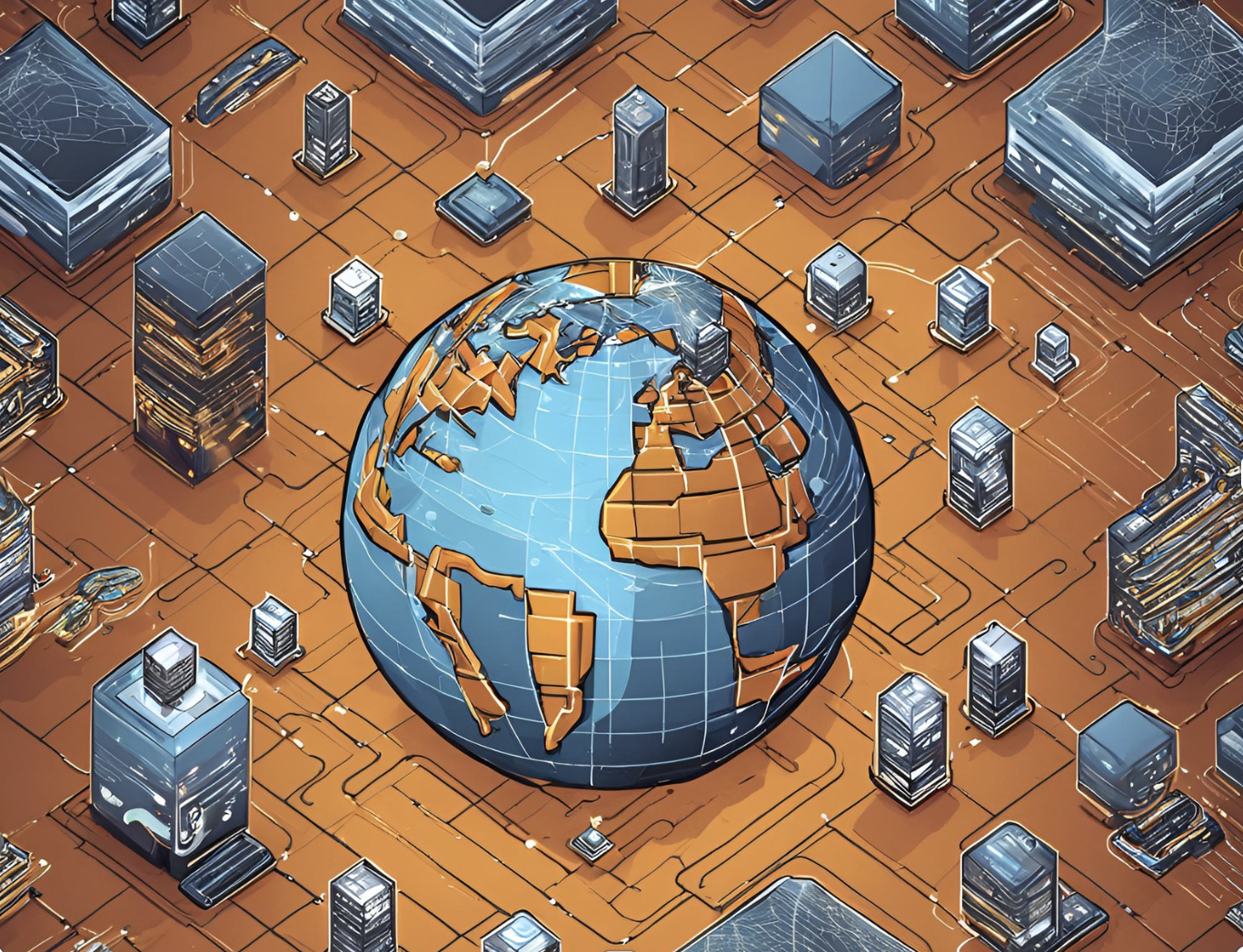Now Reading: Understanding Block chain: The Backbone of Crypto currencies
- 01
Understanding Block chain: The Backbone of Crypto currencies
Understanding Block chain: The Backbone of Crypto currencies

1. What is Block chain?
So, the record cannot be changed retroactively. In simpler words, it is a series of blocks, each containing transaction data. A single entity does not control block chain; it works on the principle of decentralization, and thus, the ledger is maintained collectively by all computers or nodes connected to it.
2. Structure of Block chain
1. Block: A block in the chain of a list of transactions. A block always consists of three components:
2. Data: This is the actual transactions or information which the block was supposed to record
This hash is derived from the block data, essential for preserving block chain consistency.
This hash links the current block to the previous block, creating a chain. If data in an old block is changed
3. Chain: Possibly quite self-evident—blocks chained together by date. The blocks are simply nuggets of hashed data that each reference the block before them, forming a chain. Also, by chaining the blocks, every block is linked to its previous one, making it more secure and unchangeable. When crypto currencies are involved, this involves sending Bit coin from one user to another.
4. Verification: After initiating the transaction, it is shared with the network. Nodes within the network validate the transaction to verify its authenticity. They confirm that the transaction meets the block chain’s protocol rules and the sender has adequate funds. III.
5.Block Formation: After the transaction is authenticated, the block is broadcast to the network. Nodes recheck the block to verify its authenticity. IV Plow miners solve complex mathematical problems to authenticate transactions and produce new blocks. Pops miners are selected based on the number of coins and stakes they are willing to make, or “stake,” as collateral. V. Adding to the Chain: Only if most nodes validate and approve the block become a part of the block chain. Rewriting or undoing the block is almost impossible since it would necessitate changing every subsequent block, which would demand considerable computational effort.
3.Key Features of Block chain
1. It is decentralized: this feature is a change brought about by block chain technology. In traditional systems where only a single entity is responsible for the database, block chain instead relies on multiple individual nodes. This minimizes the chances of fraud and single-point lines.
2. Sunlight: The block chain’s openness means all participants in the network can see their way, end to brushed against his leg. While the names of participants are generally anonymous, such trades would show up on-chain. Transparency creates trust and accountability.
3. Irrevocability: Once entered, information is stored in the block chain and impossible to reverse. Cryptographic hash functions and consensus mechanisms, which require a majority of nodes to agree upon any change in data, make this possible.
4. Cryptographic: The data on the block chain is fortified by complex encryption algorithms, which makes it virtually impossible to forge anything in it.
The areas it has and continues to explore include: Supply Chain Management: Block Chain avails an opportunity to provide transparency and enhance tracing in the supply chain. Through a block chain, organizations can record the progress of their supplies, making it easier to trace the process it follows and the origin and affirm its authenticity. Modern chains experience a lot of fraud, thus necessitating efficiency. Smart Contracts: Smart contracts are auto-implementing contracts with the terms already set and operated through a code offered rarely on a pledge cycle acceptance basis. Many popular contracts exist legally.
4.Health Care
Block chains can also be used to manage medical records. With a block chain, one guarantees that their records cannot be misplaced or lost and can only be accessed by authorized personnel. Voting systems: One can also implement block chains in their voting systems. In that case, the number of votes will always be, at most, the number of group members.
5.Digital identity
Personnel identity is another virus that technologies must control to trade safer. Besides secure rooms, blokes can provide a secure way of managing identities. Some of the limitations and challenges that Block Chain brings about do include.
Scalability: Scaling is complex. Each block chain transaction increases its size, which could lead to slower and more expensive transactions as the number of transactions goes up. This has resulted in solutions such as sharing and layer-two protocols to try and overcome this issue.
Energy ConsumptionSome consensus mechanisms, like Proof of Work, require large amounts of computational power, which increases their energy consumption. Thus, block chain technology is an environmental concern.
Block chain technology’sdecentralized and pseudo-anonymous properties make it impossible to comply with current legislation. From a global vantage point, world leaders and countries are still battling over data privacy policies for the block chain era and anti-money laundering legislation.
Current Systems: Current systems must be integrated with block chain, which can be expensive and complicated.
Since block chain generally seems secure, one can consider attacks on related apps or even such a distributed network: Smart contracts are insecure due to their vulnerabilities, potential exploits within consensus mechanisms exist, and risks with private keys, all of which can be a threat. In banking innovation, block chain is expected to continue to reform traditional banking incentives and payment systems. So, too, are Central Bank Digital Currencies (CBDCs) finding currency across the same nations to explore how their national currencies could be cast into digital form using block chain.
Furthermore, block chain’s ability to bring transparency/security and efficiency across many industries indicates that adaptability will trend upward. Yet, to fully realize its potential, the technology must navigate and successfully address existing challenges and evolve through an increasingly changing regulatory environment.
Cross-pollination of Block chain with New Tec sendKeys to Through
Combining block chain technology with immature technologies is expected to create and innovate new use cases as it matures. We have listed some of these intersections and how they could define everything to come.
6.AI and ML
Data Integrity AI and ML algorithms demand high data quality. Block chain helps in data integrity by presenting a secure and transparent ledger of information. This way, AI models are trained on consolidated, safe data.
Smart Contracts: AI can interact with smart contracts to streamline decision-making processes. One example is the potential for AI to evaluate and enforce smart contracts by using real-time data inputs to execute contract terms more efficiently.
Distributed AI: By incentivizing the supply side to train machine learning models, block chain can enable distributed AI networks that aggregate intelligence from many smaller nodes. This method can also democratize AI resources and help different entities collaborate more efficiently.
iota devices can utilize block chain to secure and verify transactions between these little clients. This can be especially advantageous for applications such as supply chain management, where devices often must talk to each other or exchange data securely.
Organizations need help managing the amount of data gathered through iota devices, which is now the biggest challenge for providers seeking to manage and validate the pile. Putting Iota data on the block chain allows more transparency in tracking and the ability to audit data integrity, which helps ensure that it is unchanged or inaccurate.
Smart Contracts:iota devices like weight sensors can automatically use intelligent contracts to create processes within pre-defined conditions. For example, the sensor can pay when it agrees that goods have been delivered automatically based on rules coded in a smart contract.
Cryptographic Security: Quantum computing threatens most of the cryptographic algorithms used in block chain. However, quantum resistance algorithms are being developed to protect block chain systems from quantum attacks when computers become a reality. On the other hand, quantum computers could enhance block chain technology due to faster processing of transactions and improved efficiency in consensus mechanisms. Concurrently, the changing industry landscape presents opportunities and challenges to regulatory bodies. As the area under which block chain can operate expands, the regulators have to plug new gaps and areas of concern and conflict. These are some areas of concern and conflict:-
Crypto currencies Regulation: Several jurisdictions are battling the idea of regulating crypto currencies. The governments are adopting different strategies, including a ban and comprehensive official recognition and regulation. Consequently, they are finding ways to protect the consumer while encouraging innovation and promoting financial stability.
Data Privacy: The early realization that block chain struggles with a conflict between data privacy and immutability illustrates this point. Similarly, the GDPR in Europe and other related laws have crystallized arguments around block chain technology. One key example is the erasure of data.
Anti-money laundering and know your customer: the pseudonymous nature of block chain technology has opened floodgates on the gap within financial technology. Specifically, the concern surrounds who is transacting. Therefore, these regulations are becoming necessary and inevitable.
Intellectual Property rights: As technology becomes more disruptive, copyrights and patent battles will play out. Regulators and industry control bodies will move to address how block chain technology can be used to foster creativity and innovation.
7.Blockchain in the real world
Block chain also has demonstrated its potential to transform various sectors, from health to logistics and finance.
Supply chain transparency: the IBM Food Trust records the steps in the supply chain on their block chain to ensure the dealers and the buyers can know where products are coming from and check the quality. It allows customers to verify that their product has met health standards. Voting Systems: Voatz is a block chain platform enabling people to vote for their leaders. It allows people to vote from their phones through block chain to secure the vote and prove that their vote counted.
Healthcare:Medical chain is a block chain that will enable patients to store their data and can be accessible only to them anytime and anywhere. The patient can also send the doctor at free will and have an annual checkup for health awareness.
Real estate:Propyl is a real estate purchase and sell company that transfers ownership to a person who buys property. Secure work with this company prevents hacks from intruders who access customer information block chain’s role in financial inclusion.
Block chain technology aims to bridge the financial inclusion gap by helping more people access financial services. Due to expertise, financial inclusion in the economy possible is possible in the following ways:
Banking the unbanked:Block chain financial services provide banking services to the unbanked population on a formal banking platform. For instance, where a physical bank closes somewhere, block chain can establish its branches or wallets to use the phones to withdraw and deposit money.
Lower transaction costs: the cost or money one uses to make a financial transaction across the border or a considerable distance or near can be reduced. Block chain integrates a large population into their network, diminishing micro-commitments and capital.
Microfinance and lending:block chain enables lending and offering other businesses financial assistance where all activities are done on this research network. Block chain’s involvement in financial inclusion reduces theft of the lender from borrowers, reducing some bank frauds.
8.Future trends and innovations
Block chain is still a new technology, is changing and imagining new prospects and possibilities for the future, including:
Interoperability: The conversation and integrated adoption of block chain. Block chain’s ability could alleviate cumbersome collaboration between different infrastructures and data exchange. NFTs supplement an additional area of possibility. NFTs are a buzzword in digital art, brand licensing, human sports, game evolution, and more block chain in the Government and public sector. Several block chain initiatives have been taken in the apprehension space. For instance, in the USA, governments have block chain initiatives like:
Conclusion
DecenterDecentralizationparency and immutability provide numerous benefits, from increased security to higher efficiency. But block chain has its roadblocks that need to be addressed to improve.
In the coming years, it will be imperative for businesses, policymakers, and individuals to understand block chain and its effects on their industry. Block chain technology will significantly impact the world through digital currencies or supply chain management. Learning this technology and figuring out its quirks will allow us to access its full potential, which will help us innovate how things work in advance.















